Beer has been a cornerstone of human culture for thousands of years, evolving from a simple fermented beverage into a diverse world of flavors, styles, and traditions. For those who seek to truly understand beer concepts, this guide offers a deep dive into the principles that shape this ancient and ever-evolving craft. Whether you’re a casual drinker curious about the basics or a dedicated enthusiast eager to expand your knowledge, this comprehensive exploration will unlock the key components that make beer unique—from the brewing process to beer styles, ingredients, and beyond. By mastering these fundamental concepts, you’ll gain a newfound appreciation for the artistry and science behind every pour, as well as the rich history and cultural significance that beer holds dear. Let’s embark on this journey together, where we’ll demystify the complexities of beer making, explore the nuances of different beer styles, and discover how to describe and savor beer like a pro. With this guide, you’ll not only understand the core concepts but also find inspiration to experiment with brewing techniques, whether through local brewing classes or homebrewing adventures. So, let’s dive in and uncover the fascinating world of beer concepts together!
Key Takeaways
– Hops, Malt, Yeast, and Water are the cornerstone ingredients shaping beer’s flavor, aroma, and texture.
– Fermentation and Aging processes transform ingredients into complex beers with depth and character.
– Beer Styles vary widely, from crisp lagers to robust stouts, each offering unique sensory experiences.
– Mastering Beer Appreciation involves evaluating aroma, flavor, and mouthfeel to uncover hidden nuances.
– Food Pairing enhances beer enjoyment, with options like burgers, cheese plates, and seafood complementing distinct beer profiles.
– The Craft Beer Movement revolutionized brewing, emphasizing innovation and quality, fueling a vibrant global beer culture.
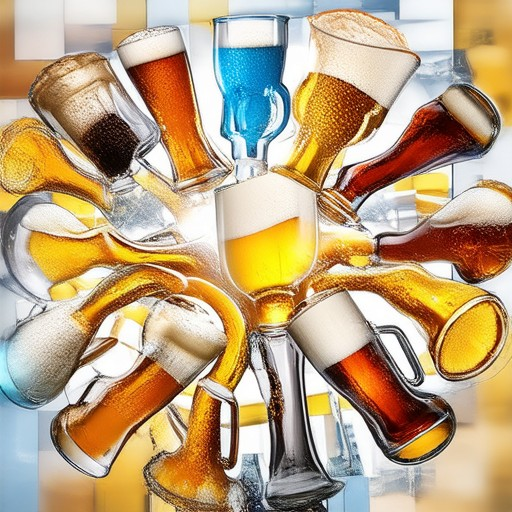
Key Concepts Behind Beer Making
Beer making, also known as brewing, involves several essential steps and ingredients that work together to create the perfect beverage. Here’s a breakdown of the core concepts:
Malt
Malt is the backbone of beer. It’s derived from starch-rich grains, most commonly barley, though other grains like wheat, rye, and oats are also used. Malt provides the sugars needed during fermentation and contributes to the beer’s body and flavor.
Hops
Hops are a crucial ingredient in beer, primarily for their bitterness, which balances the sweetness of malt. They also add aroma and flavor, often leading to a pleasant piney or citrusy note in the finish. Hops are added during the boil and sometimes during fermentation.
Yeast
Yeast is the catalyst for fermentation. It converts the sugars from malt into alcohol and carbon dioxide, giving beer its fizz. Different yeast strains can significantly affect the taste, aroma, and mouthfeel of the beer. Brewers often use ale or lager yeasts, depending on the type of beer.
Fermentation
Fermentation is the process where yeast metabolizes sugar to produce alcohol. This step also creates carbonation. The duration of fermentation can vary, influencing the final product’s characteristics. Longer ferments may develop more complex flavors.
Boiling
Boiling is a critical step in beer making. It sanitizes the wort (the liquid extracted from mashed malt), concentrates the sugars, and allows for the addition of hops. The boiling process also caramelizes malt sugars, contributing to the beer’s color and sweetness.
Maturation
After fermentation, beer often undergoes maturation, where it ages to mellow out flavors and improve stability. This can involve storing beer in tanks or barrels, depending on the style. Maturation time varies, but it’s particularly important for beers like lagers and stouts.
Brewing Techniques
Modern brewers use advanced techniques like hop bursting, dry hopping, and fractional mashing to enhance flavor and complexity. These methods allow for more nuanced beers, catering to a variety of tastes.
Water Quality
Clean, soft water is essential for brewing. Hard water can interfere with the extraction of malt flavors, while impure water can introduce off-flavors. Brewers often use water treatment systems to ensure water quality meets standards.
Beer Styles
There are countless beer styles, each with unique characteristics based on ingredients, fermentation, and maturation. From light lagers to robust stouts, the diversity of beer reflects the creativity and craftsmanship of brewers worldwide.
Craft Beer Revolution
The craft beer movement emphasizes innovation and tradition, focusing on small-scale production and the use of high-quality ingredients. Craft brewers experiment with new flavors and techniques, pushing the boundaries of what beer can be.
Sustainability
Many modern brewers prioritize sustainability, adopting eco-friendly practices to reduce waste and environmental impact. This includes using energy-efficient equipment and recycling materials.
Food Pairing
Beer pairs well with a variety of foods, from light snacks like pretzels to hearty dishes like steak. Its versatility makes it a great match for many cuisines, enhancing both food and drink experiences.
Health Considerations
While moderation is key, beer contains alcohol and calories. Brewers are increasingly experimenting with low-alcohol and non-alcoholic beers to cater to health-conscious consumers.
Future Trends
The future of beer lies in innovation, with trends like barrel-aged sour beers, Brut IPAs, and zero-calorie beers gaining popularity. Brewers are constantly exploring new frontiers to keep the craft beer scene exciting and evolving.
By understanding these key concepts, both newcomers and experienced drinkers can appreciate the artistry and complexity behind every sip of beer.
Key Concepts Every Beer Enthusiast Should Understand
Beer is a versatile and complex beverage with a rich history and diverse flavors. To truly appreciate its nuances, every enthusiast should grasp the following fundamental concepts:
1. Types of Beer
- Lagers : Known for their crisp finish, lagers include popular styles like Helles and Pilsner.
- Ales : Characterized by fruity notes, ales encompass a wide range from American IPAs to Belgian Lambics.
- Sour Beers : Featuring tart flavors, sour beers are often aged in oak barrels.
- Stout : Heavy and robust, stouts typically feature coffee and chocolate notes.
- Craft Beer : Brewed in small batches with unique ingredients, craft beer offers endless variety.
2. Ingredients in Beer
Beer is made from four primary ingredients: malted barley, hops, water, and yeast. Malt provides sweetness and body, hops add bitterness and aroma, water determines the beer’s taste profile, and yeast ferments the sugars into alcohol and carbonation.
3. Brewing Methods
The brewing process involves several steps: malting, boiling, fermentation, and conditioning. Each step influences the final product’s flavor and character. Understanding these methods helps appreciate how different beers achieve their unique profiles.
4. Flavor Profiles
Beer flavors can range from malty sweetness to citrusy bitterness. Common descriptors include floral, earthy, spicy, and smoky notes. Recognizing these profiles enhances your ability to pair beers with food or enjoy them on their own.
5. Beer History
Brewing dates back thousands of years, with ancient civilizations like Egyptians and Babylonians fermenting drinks. The invention of hops in the Middle Ages revolutionized beer production, leading to today’s diverse offerings.
6. Food Pairing Tips
Beer pairs exceptionally well with a variety of foods. Light beers complement salads and fish, while bold stouts and porters pair nicely with hearty dishes like steak or chocolate desserts.
By understanding these key concepts, you can navigate the world of beer with confidence and appreciation for its complexity. Explore different styles, experiment with pairings, and stay curious about the evolving craft beer scene.
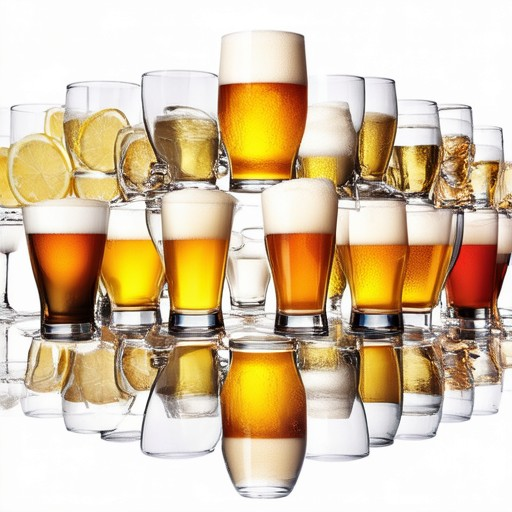
What Are the Fundamental Concepts of Beer Making?
Beer making, often referred to as brewing, is a fascinating process that has been around for centuries. While it may seem complex, understanding the basic principles can help anyone appreciate the artistry behind crafting a perfect pint. Here are the key concepts every beer enthusiast should know:
Malt and Ingredients
The backbone of beer is malted barley, which provides the sugars needed for fermentation. Malt contributes flavor, body, and sweetness to the final product. Brewers often experiment with different malts to achieve unique profiles, from smooth lagers to robust stouts.
Water Quality
Pure water is essential for brewing, as it affects the taste and mouthfeel of the beer. Brewers carefully monitor water sources to ensure it’s free from impurities that could alter the flavor. Soft water is ideal for lighter beers, while hard water is better suited for ales with more bitterness.
Hops
Hops are the heart of beer flavor, contributing bitterness, aroma, and piney notes. Brewers use whole cone hops during boiling to extract maximum flavor and aroma. Hops also act as a preservative, helping the beer last longer without spoiling.
Fermentation
Fermentation is the process where yeast converts sugar into alcohol. The type of yeast used determines the beer’s characteristics. Ale yeasts ferment at warmer temperatures, producing fruity and spicy flavors, while lager yeasts ferment cooler, resulting in cleaner tastes.
Conditioning and Carbonation
After fermentation, brewers add sugars or lactobacillus to adjust the final alcohol level and acidity. Carbonation is achieved by introducing carbon dioxide, giving beer its fizziness. Over-carbonation can make beer too gassy, while under-carbonation results in a flat finish.
Packaging
Beer is typically packaged in bottles, cans, or kegs. Cans are convenient for portability and protection, while bottles offer variety in sizes and designs. Kegs are ideal for serving draft beer, maintaining freshness and carbonation.
Brewing Process Overview
The brewing process involves several steps: mashing (breaking down starches), boiling (extracting flavors), fermentation (creating alcohol), conditioning (adjusting taste), and filtration (removing solids). Each step requires precise control to ensure a consistent and high-quality product.
Craft Beer Trends
The craft beer movement emphasizes innovation and sustainability. Brewers experiment with alternative ingredients like fruit, honey, and coffee to create unique flavors. Sustainability practices, such as using renewable energy and recyclable materials, are also gaining popularity.
Beer Styles
There are countless beer styles, each offering something distinct. Lagers are known for their crispness, ales for their robust flavors, IPAs for their hoppy bitterness, and wheat beers for their light, refreshing taste. Exploring these styles can help you discover your personal preferences.
Food Pairing
Beer pairs exceptionally well with a variety of foods. Light beers complement delicate dishes like salads or fish, while bold stouts and porters pair perfectly with hearty meals like steak or chocolate. Experimenting with different beer types can enhance your dining experience.
Homebrewing
For those looking to dive deeper, homebrewing is a rewarding hobby. With basic equipment and ingredients, you can create custom beers in your own kitchen. Many resources and communities are available to help beginners get started.
Environmental Impact
Craft breweries are increasingly focusing on reducing their environmental footprint. Practices like using eco-friendly packaging, minimizing waste, and supporting local ingredients are becoming standard in the industry.
Exploring Further
To learn more about beer making and the craft beer scene, visit The Goods On Tap for in-depth brewery reviews, brewing techniques, and industry insights. Discover the diverse world of craft beer and become a beer connoisseur today!
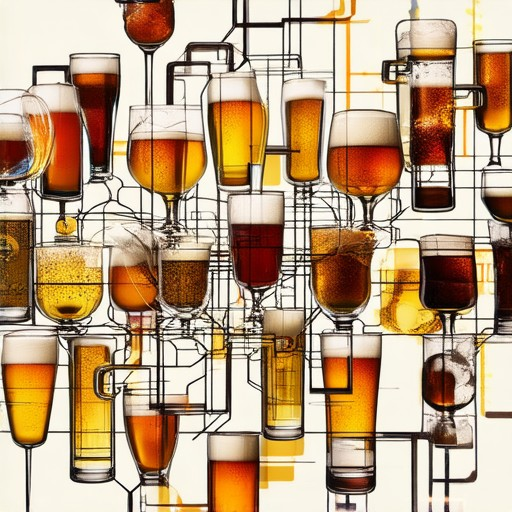
Key Concepts Every Beer Enthusiast Should Understand
To truly appreciate beer, it’s essential to grasp its fundamental components and processes. Here are the primary concepts every beer enthusiast should know:
- Hops : These flower-like resinous glands from the hop plant contribute bitterness, flavor, and aroma to beer. They also act as a preservative and help balance the sweetness of malt.
- Malt : Malt is the backbone of beer, derived from barley. Its role in the brewing process affects the beer’s body, sweetness, and head retention. Different malts yield varying flavors and textures.
- Yeast : Yeast is the catalyst for fermentation, converting sugars into alcohol and carbon dioxide. The type and strain of yeast significantly influence the beer’s taste, aroma, and mouthfeel.
- Water : Water makes up approximately 90% of beer by volume, affecting both the flavor profile and the brewing process. The mineral content of water can greatly impact the final product’s character.
- Fermentation : This process, typically conducted at specific temperatures, transforms sugar into alcohol. The duration and conditions of fermentation deeply affect the beer’s complexity and depth.
- Aging : After fermentation, beer ages to allow flavors to meld and gases to dissipate. This process enhances the beer’s overall quality and drinkability.
Understanding these elements allows beer enthusiasts to appreciate the craftsmanship behind each brew and explore the vast diversity of flavors and styles available in the world of craft beer.
Essential Concepts Defining Beer
Beer is a beloved beverage crafted through a complex process involving malt, hops, yeast, and water. Its rich history and diverse styles make it a subject of both appreciation and exploration. Below are the key concepts that define beer, from its brewing process to its various styles and enjoyment methods.
The Brewing Process
The brewing process involves several steps to transform malted barley and other ingredients into beer. Here’s a breakdown:
- Malt: Malted barley is the core ingredient, providing starches that ferment into alcohol and sugars that contribute to flavor.
- Hops: Hops add bitterness, aroma, and flavor. They are added during the boil and sometimes later in the process for different effects.
- Yeast: Yeast converts sugar into alcohol and carbonation, giving beer its fizz and alcoholic content. Different yeast strains affect flavor and texture.
- Water: Water is a critical component, influencing the final product’s taste and body. Brewers adjust water quality to achieve desired flavors.
Beer Styles
There are countless beer styles, each offering unique characteristics. Here are some major categories:
- Lagers: Known for their crispness and clean finish, lagers include popular styles like Helles and Pilsner.
- Ales: Ales have a fruity and often spicy character. Examples include India Pale Ale (IPA) and Wheat Beer.
- Stouts and Porters: These dark beers feature roasted malt flavors. Stouts can be creamy and coffee-like, while porters often have chocolate notes.
- Sour Beers: Brewed with souring agents like lactobacillus, these beers have tangy, acidic flavors.
- IPAs: Intensely hoppy with bold citrus and pine aromas, IPAs are a modern favorite.
Appreciating Beer
Understanding and enjoying beer goes beyond drinking it. Here’s how to approach its appreciation:
- Nose: Sniff the beer to detect aromas like citrus, floral notes, or caramel.
- Flavor Profile: Taste beer for malt sweetness, hop bitterness, and acidity. Pay attention to the finish.
- Mouthfeel: Notice the texture—smooth, creamy, or crisp—depending on the beer type.
- Serving Temperature: Most beers taste best around 45°F-50°F (7°C-10°C). Higher temperatures can reveal off-flavors.
Food Pairing
Beer pairs well with a variety of foods. Common matches include:
- Burgers and BBQ meats (for bold, malty beers)
- Cheese plates (try pairing with farmhouse ales or blue cheeses)
- Fish and seafood (light lagers complement ocean flavors)
- Chocolate desserts (stout’s roasty notes pair nicely with dark chocolate)
By understanding these concepts, you can explore the vast world of beer and appreciate its complexity. Whether you prefer a refreshing lager or a robust stout, there’s a style for every palate.
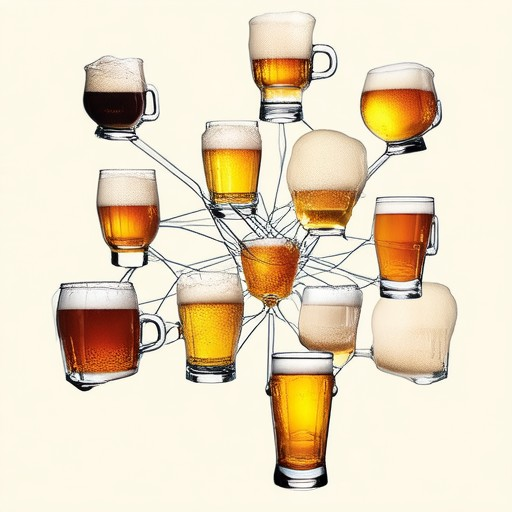
Core Concepts Every Beer Enthusiast Should Understand
Brewing beer is an ancient art that has evolved significantly over centuries, resulting in a vast array of styles, flavors, and traditions. To truly appreciate beer, both in its making and drinking, every enthusiast should grasp these fundamental concepts:
- Beer Types: There are countless varieties of beer, ranging from lagers and ales to stouts and porters. Each style has unique characteristics, such as malt flavor, hop presence, and fermentation techniques. Popular styles include:
- Lagers: Known for their crispness and often clean finish, lagers include well-known brands like Dogfish Head and Sierra Nevada .
- Ales: Ales encompass a wide range, from American IPAs like Stone Brewing ‘s offerings to Belgian ales known for their fruity complexity.
- Stouts and Porters: These dark beers are rich in roasted malt flavors. Examples include Guinness and Budweiser ‘s Budweiser Black.
- Ingredients: Beer is made from four primary ingredients: water, malted barley, hops, and yeast. Malt provides sweetness and body, hops add bitterness and aroma, and yeast ferments the sugars to create alcohol. Understanding these ingredients helps in appreciating how they interact in different beer profiles.
- Beer Tasting Techniques: Properly tasting beer involves evaluating appearance, aroma, flavor, and mouthfeel. Start by examining the beer’s color and clarity. Then, inhale the aroma (which can reveal hints of fruit, citrus, or caramel), followed by sipping to detect flavors like malt, hops, and yeast notes. Pay attention to the finish, which indicates the beer’s balance and lingering qualities.
- Beer History and Culture: Beer has deep roots in human history, serving as a staple in social gatherings, religious ceremonies, and even as a form of currency. Understanding the historical significance of beer helps in appreciating its cultural impact, from medieval brew houses to modern craft beer movements.
- The Craft Beer Movement: Originating in the late 1970s, the craft beer movement emphasized innovative brewing techniques and a focus on quality. This movement has led to the rise of small, independent breweries that experiment with unique flavors and brewing methods. Today, craft beer accounts for a significant portion of the global beer market.
Understanding these concepts not only enhances your appreciation for beer but also equips you to navigate the diverse world of beer with confidence. Whether you’re a casual drinker or a dedicated enthusiast, this knowledge will deepen your enjoyment of one of the oldest and most beloved beverages in the world.

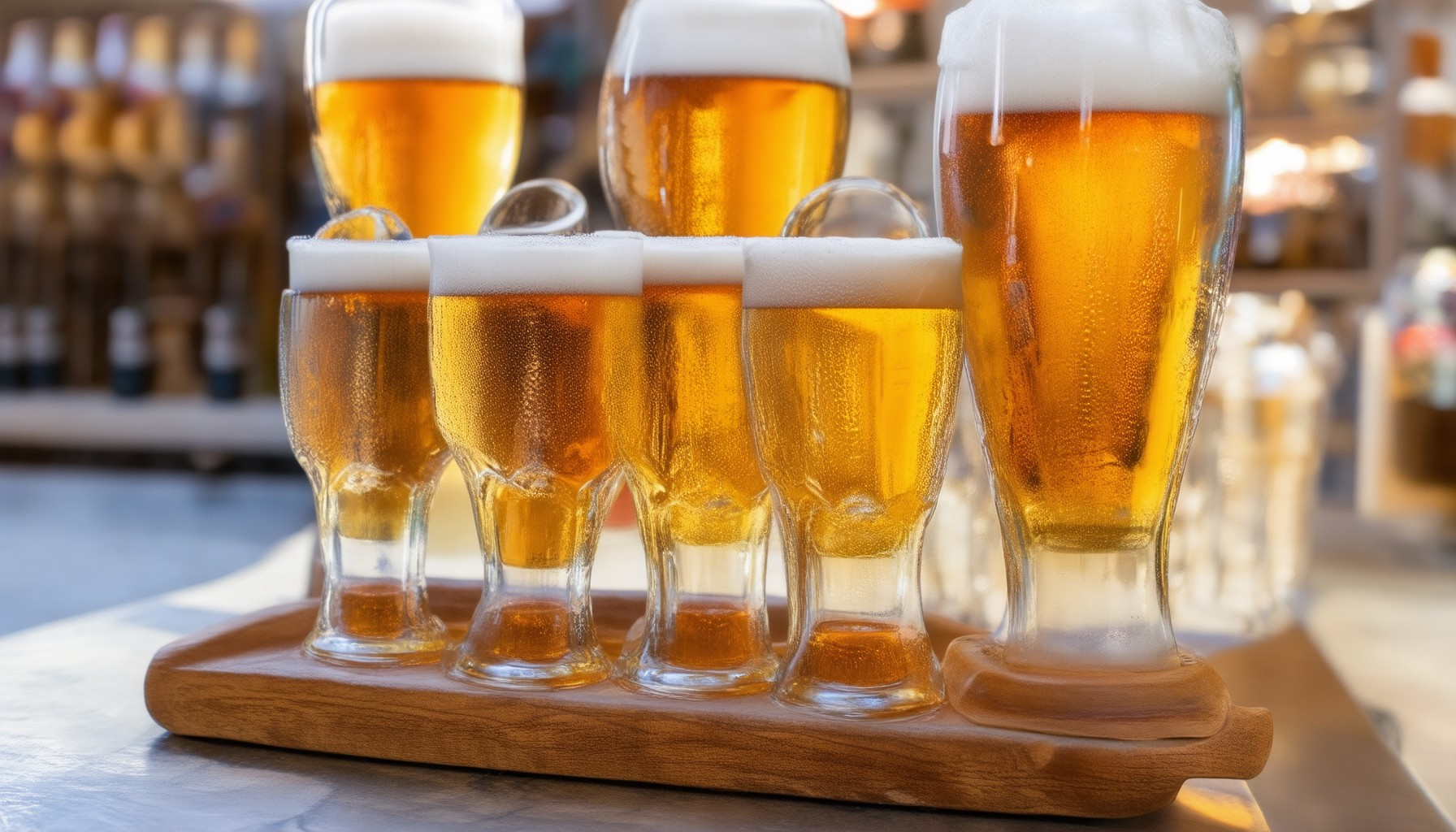


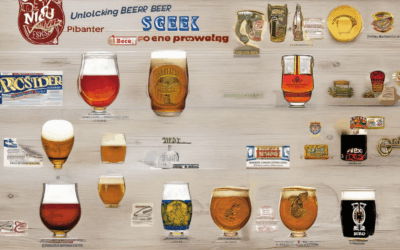
0 Comments